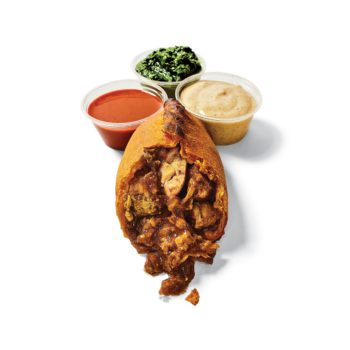Imagine a dish like a dumpling, but with a crunchy, flaky skin like a pie crust, mixed with a spicy, gooey filling like a stew. No, we’re not reading your mind. What we described exists in reality. It’s called a Salteña and it’s a Bolivian delicacy that was hard to come by in New York… until three brothers of Bolivian descent started selling them.
Alex, David and Patrick Otropeza now have a place near Columbus Circle called Bolivian Llama Party. The other day, Brendan met up with David and Patrick and tempted his fate by sampling the delectable dish.

David Oropeza: So, these are typically sold as a midday snack. They’re the appetizer to your lunch. So, typically in Bolivia your lunch is your biggest meal of the day.
Brendan Francis Newnam: I love the idea of a lunch appetizer.
Patrick Oropeza: Bolivians’ rise time are super early. So, basically, they’ll have tea and bread for breakfast. And then, around 10:00, they have a salteña, and their lunch consists of, like, three or four courses followed by a nap.
Brendan Francis Newnam: What a wonderful place.
David Oropeza: And then you have a light dinner.
Brendan Francis Newnam: So, I’m looking at this, and this looks like a robust empanada or a sort of dumpling. It has a beautiful braid on it. It’s the size of — what would we say that is? It’s like…
Patrick Oropeza: An iPhone 1, maybe?
David Oropeza: A large beeper?
Brendan Francis Newnam: You guys are city kids, clearly. It’s like, the size of half of a mango.
Patrick Oropeza: Maybe a small avocado.
Brendan Francis Newnam: Alright. So, it’s a fat avocado with this kind of braid on top. A lot of cultures have these sorts of things. It’s a delivery system for some sort of protein. What sets this apart from, say, an empanada?
Patrick Oropeza: Well, traditionally, a lot of Bolivian food is focused on kind of like, grandma traditions. So, you make it by hand. Like, the way people do pasta, we make ’em by hand. A hundred pounds of flour every day in our kitchens.
So, the dough is made with the yellow chili, and — it’s a Bolivian yellow chili called ají amarillo. That gives the dough a bit of a sweet taste. So, it’s almost like a cookie-like but slightly sweet, but the chili adds savory notes where it’s not just like, pie dough where it’s just sugar.
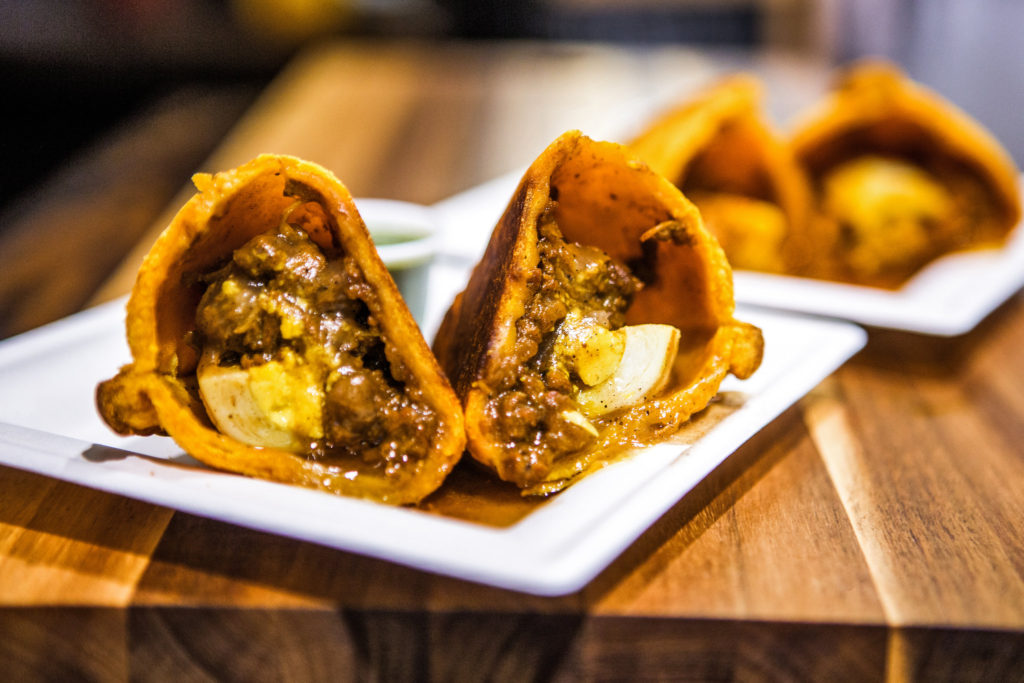
The inside is a gelatinized filling. So, the idea is that, in Bolivia, soup is everywhere. Soup is, like, you know, you’re not Bolivian if you don’t eat soup. And inside is that soup. So, you’re getting bread and soup, but in a way where you can transport it to go to work because, you know, Bolivians are traditionally laborers. So, you can take this with you, and it stays warm for quite a while. So, you can eat it whenever.
Brendan Francis Newnam: How does one keep soup in dough?
Patrick Oropeza: We cook it with a base of a gelatin. Depending on the filling that we’re doing, we’ll use, like, a cow foot or anything with a lot of collagen.
Brendan Francis Newnam: A gelatin mix of some sort.
Patrick Oropeza: Yeah, exactly. You break it down until you create the gelatin. When that chills, it’s nice and firm — well, not super firm — but you have to work fast. You roll out the dough, you fill it, and you braid it, and the braiding part is super important because if it’s not strong, their soup will come right out.
Brendan Francis Newnam: OK. And so, what’s the classic filling?
Patrick Oropeza: Traditionally, Bolivians are… you know, it’s chicken and beef. What makes them special is the way they’re flavored with the ají.
Brendan Francis Newnam: Did you grow up eating these at home?
Patrick Oropeza: Yeah. I mean, all the time. We didn’t eat them enough because it’s very hard to find. There was only, like, one or two spots.
Brendan Francis Newnam: This isn’t something a home cook would make because it’s so labor-intensive?
David Oropeza: Well, if your mother really loves you, then she will spend the four days making this because you’ve got to spend a day making the dough, another day making the filling, then rolling them, and then baking them. So, you’ve got to have a lot of brownie points with your mom if she’s going to make these for you.
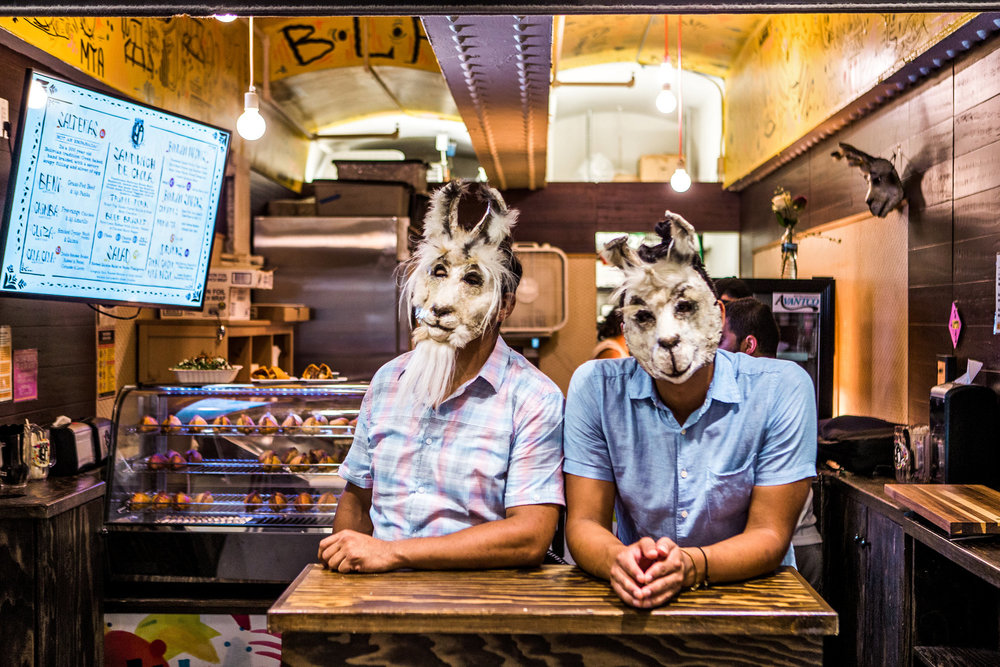
Brendan Francis Newnam: So, is the takeaway that your mother doesn’t love you?
David Oropeza: She made us work for it, I think is a better way to put it.
Brendan Francis Newnam: Alright. So, where does the name come from? Why is it called a salteña?
David Oropeza: The story goes, the folklore tale is a lady came from Argentina, a region in Argentina called Salta. And she was exiled from Argentina, came to Bolivia, and needed to make money and created this. And people called it a salteña because of the lady from Salta who made it. So, it was just known as that. The name caught on, and now, every region in Bolivia makes their own different type of salteña. It’s like the American French fry in Bolivia, pretty much.
Brendan Francis Newnam: But do they have a salteña in Argentina?
David Oropeza: They do. So, we get a ton of Argentinians coming by the booth, into the spots, and being like, “This is an Argentinian product!” They just come to argue. They don’t even buy; they just argue. “This is our product. You took it from us!” And we’re like, “No, she came here, and we created this tradition around it and the culture…” and it just goes on. This guy comes every day.
Brendan Francis Newnam: I also read that when you’re eating with a group, the first one who spills the liquid has to pay for the whole thing?
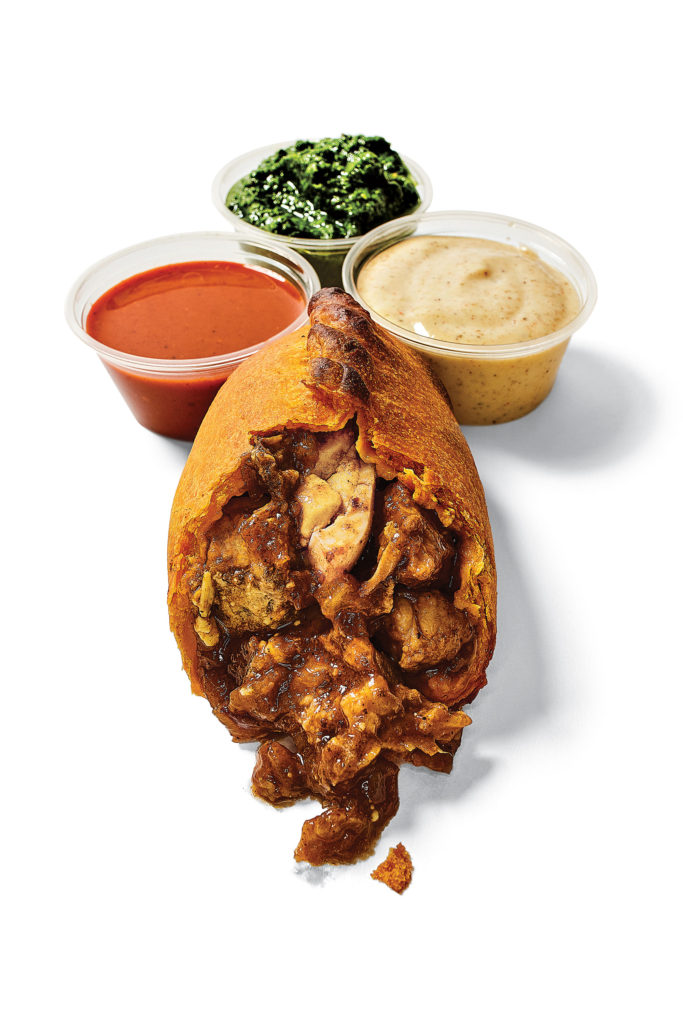
David Oropeza: There’s so many different tales of this, too. So, if you, like, eat a salteña and don’t spill a drop on your plate, you’ll be married quickly, and if you do spill, you won’t get married at all. Or I’ve heard… what are some other ones? Do you remember?
Patrick Oropeza: I’m sure there are a lot that are, like, bad sex for five years or something.
David Oropeza: Yeah, just something like you’re just banned from the community if you spill a drop on the plate.
Brendan Francis Newnam: Alright. Well, my destiny awaits in this bite here. So, let’s move towards it.
Patrick Oropeza: This one right here is our brisket salteña. That kind of represents everyone’s craves for smoked brisket in New York. So, this is like, salteñas in New York, so this has a bit of a smokier taste, but it’s flavored with fennel and anise and red chilies.
Brendan Francis Newnam: So, how do I eat this?
David Oropeza: OK. So, you hold the salteña upright, the braid facing towards you. You take a bite out of the tip, OK? So, you just take a little bite out of there. You get the hole big enough, and you pour the llajua inside.
Brendan Francis Newnam: Llajua, it’s like, an herbal salsa, kind of?
David Oropeza: Yeah, so, basically, this is the hot sauce, the salsa of Bolivia. Everyone’s got it on their table. It’s kind of like…
Patrick Oropeza: It’s like Bolivian sriracha, pretty much.
Brendan Francis Newnam: So, we’re going to pour this in the top of it?
David Oropeza: Inside, yeah. Once you have the little hole in there, you pour the salsa inside, and you have two ways to go about it from there. You can take a spoon, if you want to be delicate and make sure you don’t get anything on yourself, or you can just really go in, slurp, suck, and get the juice out, and then keep eating.
Brendan Francis Newnam: Alright, I’m going to go for the second way, obviously, because that seems like the tougher way to do it. So, can you record me while I do this?
So I’m going to put a little bit of this [llajua] in, and then just go for it.
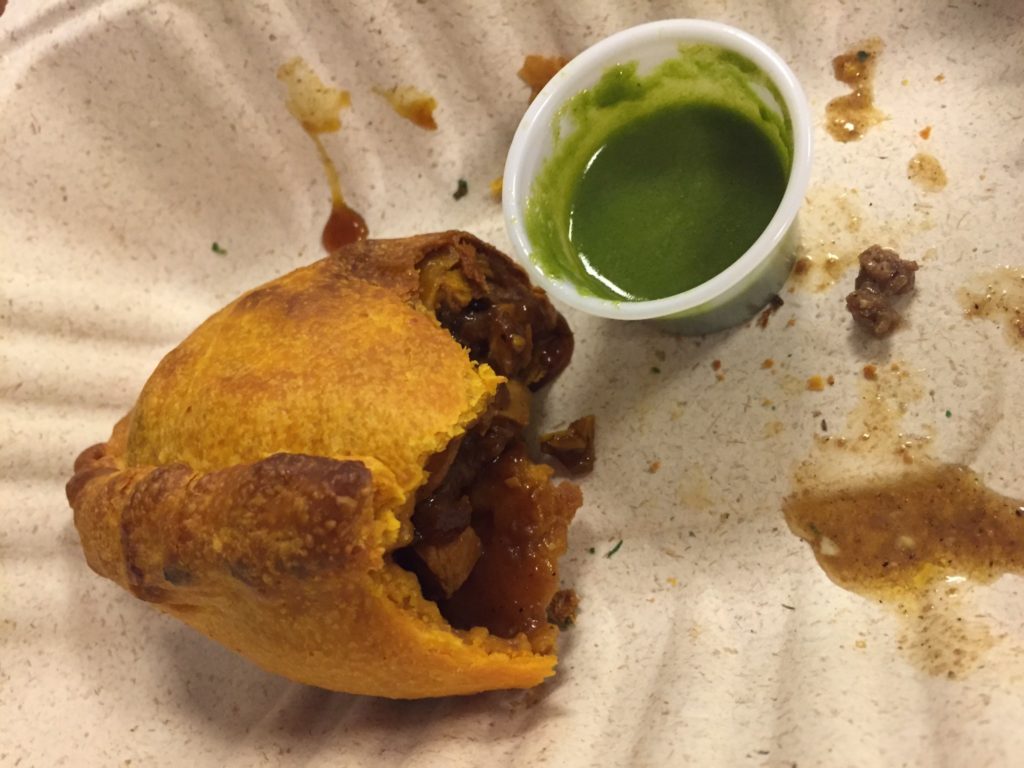
David Oropeza: That was an ambitious bite he took. It was almost half the salteña. I’ve seen it happen before that someone’s taken that kind of bite and then sauce just squirts all over themselves and hits somebody.
Brendan Francis Newnam: It didn’t squirt. So, is that just because I have really good eating skills?
David Oropeza: Beginner’s luck.
Brendan Francis Newnam: Does this mean I’m not going to get married?
David Oropeza: Yeah, I think… no, well, you haven’t… oh, wait, there’s a drop right there. I think that’s it.
Patrick Oropeza: Oh, no. It’s starting, it’s starting.
Brendan Francis Newnam: Wait, what does that mean again?
David Oropeza: Bachelorhood for life. Which isn’t that bad in New York City, I feel like, so that’s alright.
Brendan Francis Newnam: I hope my mom isn’t listening to this.
